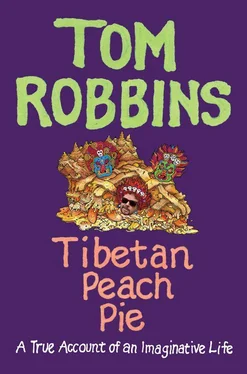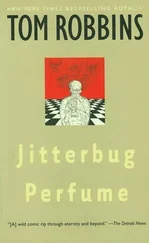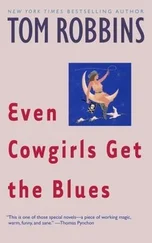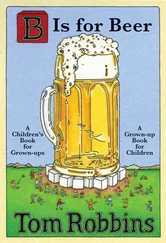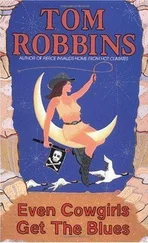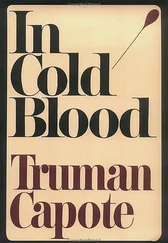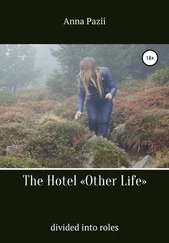Daniel Defoe (1660–1731) obviously didn’t live in Blowing Rock either, but it turns out that I’m a direct descendant of that luminary. Moved by this newfound knowledge to reread Robinson Crusoe, I was dismayed to find that Defoe was an imperialist, a racist, a sexist, and somewhat of a literary hack — which is to say, in his entire book there is not one sentence so daring or so beautiful or so funny or so wise that I’d give twenty-five dollars to have written it (a screwy way to judge talent, I agree, but there you have it).
Ultimately, I’m far less enthused about my kinship with Daniel Defoe than with Polly Elrod (1833–1924), my great-grandmother and arguably the first Pop artist in America.
Polly lived within walking distance of Blowing Rock — if you didn’t mind a two-day walk each way. My father, in the company of his own pa, made the hike when he was a boy. The Elrod cabin was way back in the hills, up one of those deep valleys that we hillbillies called “hollers,” unreachable except on foot. Daddy and Papa crashed in a hospitable farmer’s hayloft their first night on the trail.
A widow by then, Polly and her late husband had built the one-room log cabin themselves. Its most prominent feature was a massive fieldstone fireplace, used for both heating and cooking, that took up one whole wall of the cabin. Now, both Polly and her spouse chewed tobacco. In those days, cured and pressed tobacco meant for chewing came in plugs about the size and shape of a deck of cards. The “chaws” were neither packaged nor wrapped. Brands were distinguished one from another by small tin emblems with prongs on the back, one emblem per plug. The Red Apple emblem was actually shaped like an apple, Red Dog’s like a greyhound.
Polly and her husband favored a brand called Red Jay. Its emblem, scarlet with black lettering, was, not surprising, in the shape of a jaybird. Well, Polly, for whatever reason, had taken those emblems and stuck them one by one into the mud chinks between the stones. Over the years — and she lived to be ninety-one, which allowed for considerable chawing — literally hundreds of shiny little red tin jaybirds were embedded in the wall.
The overall effect, as my father described it, would have been beyond kitsch and into the realm of the genuinely aesthetic. Here in regular lines, there in purely arbitrary arrangements, the emblems in combination would have generated a kind of optical chatter, a visual din both restful and jarring. Repetition would have reduced concentration on the individual unit (the miniature Red Jay icon) and increased apprehension of the display as a whole, a kind of three-dimensional wallpaper quite likely as powerful as it was comic and strange.
Was Polly’s intent wholly decorative? Was it to create a nostalgic record of those countless hours of chawing? Or was her wall a celebration of the pleasure chawing afforded her in a hardscrabble life whose pleasures would have been scarce and lean? In any case, when I envision that fireplace it is difficult not to think of Andy Warhol’s Two Hundred Campbell’s Soup Cans or Green Coca-Cola Bottles, paintings that caused such a stir in the art world in 1962. I’m proud that the blood of Polly Elrod runs in my veins. And I like to fancy that the red corpuscles in that blood resemble little tin jays.
My sister Rena never heard about her great-grandmother’s Pop Art masterpiece. For that matter, it’s doubtful if she ever heard the legend of the Cherokee princess, although she surely would have loved its happy ending. Rena was a sweet, sunny, towheaded child, whose life revolved mainly around her family of dolls.
It was a lovely May day two months before my seventh birthday when Rena, age four, was taken to Blowing Rock’s new clinic to have her tonsils removed. “She’ll be home in a day or so,” my mother assured me. Rena never came home — except in a pretty little coffin decorated with cherubs, lined in white satin. She’d been administered an overdose of ether.
To this day, when anyone I love leaves home for longer than a few hours, I’m filled with dread that they will not return.
When Mother became pregnant about a month after Rena’s death, she prayed over and over and with much fervor that she’d give birth to twin girls: a single daughter would have invited inevitable comparisons to Rena, and as for another son, I guess one Tommy Rotten was more than enough for one household. The next March, my twin sisters Mary and Marian were born.
It gives one pause, does it not? You needn’t place it in a religious context, we can argue all night about the true identity of its source, but for me, at least, there is no denying the evidence of answered prayer.
Aside from love, which we may assume everybody except heart-numb psychopaths covet in one guise or another, average Christianized Americans (with whom I’ve a whole abattoir of bones to pick) really desire two things: they want to get rich and they want to go to heaven. (Apparently in that order.) And this despite the fact that their very own Lord and Savior explicitly warned that it’s easier for a camel to pass through the eye of a needle than for a rich man to enter the kingdom of heaven.
What’s up with that? Do they think Jesus was joking, just kidding around? Or does each would-be wealthy Christian believe that an exception will be made in his or her case; that at heaven’s gates his or her accumulation of property and cash will elicit a knowing, sympathetic wink — as the needle’s eye is temporarily widened to let him or her squeeze through?
Rena wouldn’t have had that problem. The only possessions she left behind were her dolls — and the toy tea set with which she entertained them daily.
Pink Baldwin claimed there was a ridge not far from Blowing Rock where huckleberry bushes grew as thick as the whiskers on Santa Claus’s chin. There was a problem, however: the ridge was populated almost as thickly with rattlesnakes. When the Baldwin family went berry picking up there, they were obliged to wear lengths of stovepipe over their legs for protection. According to Pink, the sound of rattlesnakes striking those stovepipes resembled rain falling on a tin roof.
My parents, an uncle and aunt of mine, and I were driving on the Mount Mitchell Highway after a scenic picnic lunch atop the highest peak east of the Rockies, when a large diamondback rattlesnake was seen sunning itself in the middle of the road ahead of us. Daddy stopped the car, whereupon I abruptly leaped out for a closer look. Just as swiftly, Daddy followed, grabbed me by the collar and practically threw me back in the car.
My father and uncle, for reasons doubtlessly as primal as they were on that occasion unnecessary — a response embedded aeons ago in Homo sapiens DNA — set about to kill the snake. The stones they hurled at it quickly aroused it from its stupor, at which point it fled across the road, racing into the ditch and up a steep embankment, disappearing into the underbrush. Naturally, we thought that was the end of it, and I alone, smarting from my rough treatment and ever ripe for adventure, was disappointed.
A minute later, however, we were in for a surprise. The snake, having turned around in the brush, came racing back down the bank, heading straight for its attackers, rattling furiously. It sounded like the Devil’s maracas at carnival time in hell, and it was enough to set father and uncle falling all over themselves to get back in the car. The big viper coiled, jaws agape, fangs glistening, as if daring its tormentors to confront it. Wisely, they declined.
What happened next was that Daddy drove over the angry reptile several times with the car before leaving it for dead. But was it? The whole incident had a kind of supernatural flavor, heightened by the fact that no one, including herpetologists to whom I’ve since described the encounter, could remember ever hearing of a rattlesnake, once out of danger, deliberately returning to challenge its human enemies. Most experts, frankly, were incredulous.
Читать дальше
